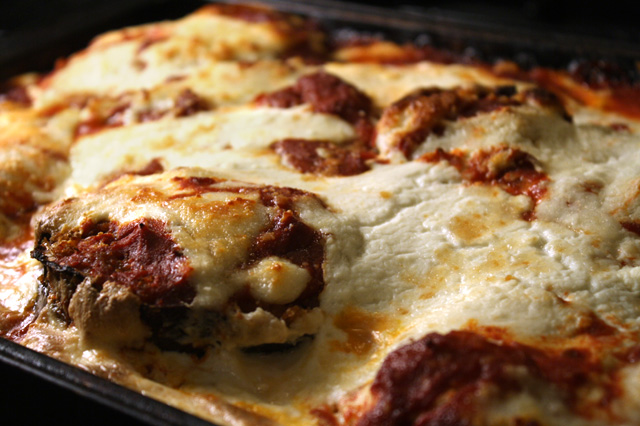- LIFE
80+Beautiful Baby Names for 2025


Eggplant parmesan is a classic Italian dish that has found its way into the hearts and kitchens of food enthusiasts around the world. Known for its rich flavors and comforting textures, this dish can be a delightful addition to any meal plan. However, achieving the perfect eggplant parmesan can be challenging, especially for home cooks seeking to master the art of this beloved dish. This guide will provide practical advice, troubleshooting tips, and pro hacks to elevate your eggplant parmesan to restaurant-quality standards.
Creating a mouthwatering eggplant parmesan begins with mastering essential techniques. The key is to balance flavors and textures while ensuring each component complements the others. Start by selecting firm, glossy eggplants that feel heavy for their size. Slice them evenly to ensure uniform cooking, typically about 1/4 inch thick.
Salting the eggplant slices is crucial to draw out excess moisture and bitterness. Lay the slices on a baking sheet, sprinkle with salt, and let them sit for about 30 minutes. Afterward, rinse the slices and pat them dry with a paper towel. This step will help you achieve the perfect texture, preventing sogginess in the final dish.
Even experienced cooks can encounter issues when preparing eggplant parmesan. A step-by-step troubleshooting guide can help address these challenges. If your eggplant slices turn out too soggy, ensure they are adequately salted and dried before cooking. Overcrowding the pan during frying can also lead to steaming instead of browning, so work in batches if necessary.
Another common issue is eggplant slices absorbing too much oil. To mitigate this, use a non-stick pan with a light coating of olive oil. Alternatively, consider baking the slices in the oven at 400°F for about 20 minutes, flipping halfway through.
The breading process is where many home cooks struggle, but specific techniques for breading eggplant can significantly improve your results. Start by setting up a breading station with separate bowls for flour, beaten eggs, and breadcrumbs. Dredge each slice in flour, dip it in eggs, and coat it with breadcrumbs for a crispy finish.
For added flavor, mix grated Parmesan cheese and Italian herbs into the breadcrumbs. Using panko breadcrumbs can also enhance the texture, providing a lighter, crispier coating. If you’re looking for a gluten-free option, substitute traditional breadcrumbs with gluten-free panko or crushed cornflakes.
The tomato sauce plays a pivotal role in the overall flavor profile of eggplant parmesan. While both marinara and traditional tomato sauces are popular choices, each offers a distinct taste. Marinara sauce is usually lighter with a hint of garlic and herbs, while traditional tomato sauce tends to be thicker and richer.
A list of recommended tomato sauces includes homemade options, which allow for customization with fresh herbs, garlic, and a touch of red pepper flakes for heat. Store-bought brands like Rao’s or Bertolli offer high-quality alternatives with authentic Italian flavors.
Baking is a healthier alternative to frying, and achieving a golden brown crust on your eggplant slices is possible with a few tips. Preheat your oven to 425°F and line a baking sheet with parchment paper. Arrange the breaded eggplant slices in a single layer, and spray them lightly with olive oil for even browning.
Flip the slices halfway through baking to ensure both sides are evenly cooked. This method not only reduces oil absorption but also enhances the dish’s overall texture, making it a perfect choice for those looking to cut down on calories without sacrificing flavor.
For those with dietary restrictions, gluten-free options and substitutions for eggplant parmesan are readily available. Use gluten-free breadcrumbs or crushed gluten-free crackers for the breading. Ensure all other ingredients, such as flour and sauces, are certified gluten-free.
Additionally, consider using almond flour as a substitute for traditional flour in the breading process. This not only caters to gluten-free diets but also adds a unique nutty flavor to the dish.
Fresh basil can significantly enhance the flavor of eggplant parmesan, adding a fragrant aroma and vibrant taste. Layer fresh basil leaves between the eggplant slices and sauce before baking. For a more pronounced basil flavor, consider infusing your tomato sauce with basil during cooking.
Garnishing the finished dish with freshly chopped basil just before serving can also elevate its presentation and flavor, providing a fresh and aromatic touch that complements the rich, cheesy layers.
Eggplant parmesan is not only a dinner staple but also a versatile ingredient for creative lunch ideas. Consider making eggplant parmesan sandwiches using crusty Italian bread, layering slices of eggplant with fresh mozzarella and basil. Alternatively, transform leftovers into eggplant parmesan paninis or wraps for a quick, satisfying meal.
For a lighter option, serve eggplant parmesan over a bed of mixed greens with a drizzle of balsamic glaze. This approach not only offers a refreshing twist but also introduces a healthy serving of vegetables, perfect for a balanced lunch.
Choosing the right olive oil can make a significant difference in the flavor and texture of eggplant parmesan. For cooking, opt for a high-quality extra virgin olive oil with a moderate smoke point, ensuring it withstands the heat of frying or baking without burning.
For drizzling over the finished dish, select an extra virgin olive oil with a robust, fruity flavor. This not only enhances the taste but also adds a luxurious finish, elevating the overall dining experience.
Proper storage and reheating methods can preserve the flavors and textures of leftover eggplant parmesan. Store leftovers in an airtight container in the refrigerator for up to three days. To reheat, preheat your oven to 350°F and place the slices on a baking sheet, covering them with foil to prevent drying out.
For a quicker option, use a microwave-safe dish, covering the eggplant with a damp paper towel to maintain moisture. While microwave reheating is convenient, it may result in a softer texture. For best results, opt for oven reheating to retain the dish’s crispness.
The Mediterranean diet emphasizes fresh ingredients and balanced flavors, making eggplant parmesan an ideal candidate for adaptation. Incorporating Mediterranean diet-friendly eggplant recipes can introduce new taste profiles while adhering to dietary preferences.
Consider using whole grain or gluten-free pasta as a side, and include a variety of vegetables in the dish, such as roasted red peppers or artichokes. These additions not only align with Mediterranean principles but also enhance the nutritional value and complexity of the meal.